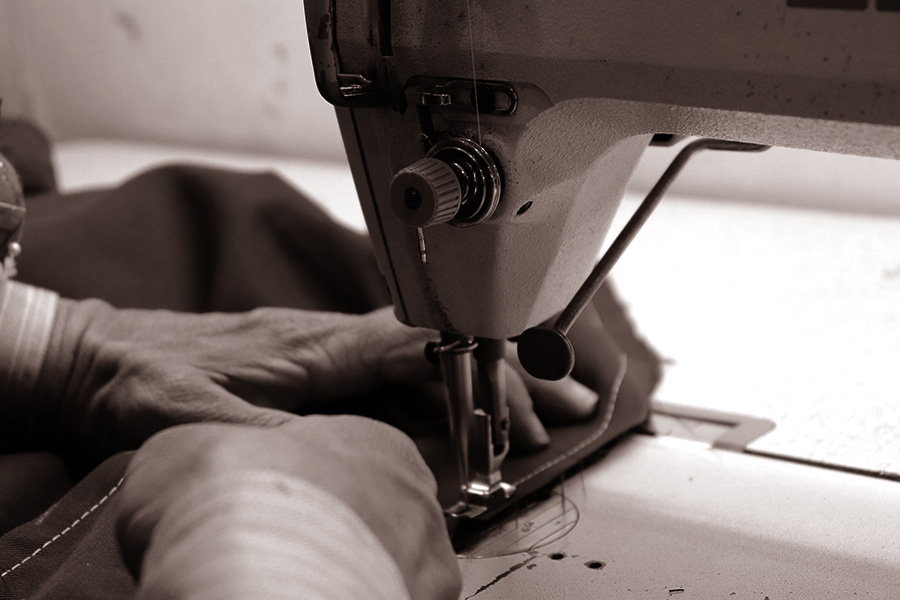Understanding the Tailoring Process: From Textile Selection to Final Suitable for the Ideal Closet
The tailoring process is a complicated interaction of art and scientific research, starting with the critical choice of fabric selection and culminating in the exact modifications of last installations. Each material kind brings distinct qualities that influence not just the aesthetic allure but also the garment's long life and suitability for numerous events.
Significance of Fabric Option
Selecting the right fabric is important in the customizing procedure, as it straight affects the comfort, sturdiness, and total visual of the final garment (tailor perth). The choice of textile sets the structure for the garment's efficiency, functionality, and style. Various fabrics have unique buildings, such as breathability, stretch, and weight, which can substantially impact exactly how the garment drapes and fits the body
Moreover, textile choice affects the garment's longevity and ease of care. High-quality textiles can endure deterioration, maintaining their look and structure with time, while lower-quality materials might cause pilling or fading. Additionally, the ideal textile adds to the garment's capacity to change across periods and events, thus enhancing convenience.
A tailored piece made from an ideal fabric not just showcases craftsmanship however likewise boosts the user's confidence. Recognizing the nuances of material selection is critical for any kind of tailoring undertaking. It guarantees that the final product not just satisfies the aesthetic desires of the client yet additionally straightens with practical requirements, thereby attaining a harmonious equilibrium in between type and feature in the customized wardrobe.
Kinds Of Fabrics and Their Uses
Understanding the different types of materials readily available is important for making educated decisions during the tailoring procedure. Each material has one-of-a-kind features that determine its viability for specific garments and occasions.
Cotton, recognized for its breathability and gentleness, is optimal for sportswear and summer season garments. Its flexibility allows it to be tailored into every little thing from t-shirts to outfits. Woollen, on the other hand, is preferred for its heat and structure, making it an exceptional option for formal matches and outerwear - tailor perth. Its all-natural elasticity helps garments maintain form gradually.
Silk emanates luxury and is light-weight, making it excellent for eveningwear and fragile blouses; nevertheless, it needs mindful handling due to its delicacy. Bed linen, with its distinctive finish, is a prominent choice for cozy climates, supplying a airy and crisp feel, however it wrinkles easily, which might influence the garment's look.
Artificial textiles, such as polyester and nylon, offer durability and resistance to wrinkles, making them appropriate for daily wear and active garments. Recognizing these material types and their residential properties enables far better decision-making, ensuring that each tailored item not only fits well but likewise lines up with the desired function and celebration.
The Tailoring Methods Explained
The art of tailoring counts on a variety of methods that change fabric into well-fitted garments. Central to this procedure is pattern preparing, where a tailor develops templates based on the customer's measurements and preferred design. This preliminary step makes certain that the garment will fit the user effectively before any kind of reducing takes place.
Once patterns are established, reducing methods enter into play. Precision is critical as errors can result in misfitting garments. Tailors commonly use different cutting methods, such as single-layer reducing for intricate layouts and multiple-layer cutting for effectiveness on conventional patterns.
Basting is one more important technique, permitting dressmakers to briefly sew material assemble for a preliminary fitting. This technique provides the opportunity to examine the drape and total shape before last sewing.
Seaming strategies, consisting of french joints and flat-felled seams, improve the garment's durability and aesthetic allure. Tailors likewise use strategies such as interfacing and cushioning to give structure and shape to specific locations, like shoulders and collars.
Last but not least, ending up methods, including hemming and edge finishing, guarantee the garment's long life while providing a sleek appearance. Together, these strategies form the foundation of efficient tailoring, causing exquisite, tailor-made clothing.
Fitting Modifications and Factors To Consider

Key considerations consist of the shoulder fit, which ought to neither sag nor restrict click now motion, and the sleeve length, which need to permit for comfy arm movement while keeping a polished appearance. In addition, modifications at the midsection can improve the silhouette, with alternatives to allow out or absorb textile as required.
The increase of trousers is another critical aspect; it must sit pleasantly over the hips without triggering discomfort, enabling for simplicity of motion. Hemming lengths for both trousers and skirts must reflect the wearer's preferred style while respecting proportions.

Keeping Your Tailored Attire
Appropriate maintenance of tailored garments is necessary to preserving their fit and look in time. To make sure durability, normal cleaning is critical. Always comply with the treatment label guidelines, which may recommend dry cleansing for delicate textiles or maker cleaning for even more resilient materials. Prevent regular laundering, find as this can use down the fabric and modify the garment's form.
Storage is equally important; usage cushioned wall mounts for layers and jackets to keep shoulder structure, and store trousers folded up nicely or hung to stop creasing. Safeguard garments from direct sunshine, which can discolor colors and damages fibers.
In addition, periodic inspections for small repairs can avoid larger concerns. Check for loosened switches, tearing joints, or indicators of moth damages, attending to these issues without delay to maintain the garment's integrity.
Last but not least, consider seasonal turning. Putting on customized items in moderation enables materials to recover, extending their lifespan. By applying these maintenance techniques, you can make sure that your customized garments stay as excellent as the day you first wore them, improving your excellent closet for many years ahead.
Conclusion
The tailoring procedure, including textile option, skilled strategies, and precise fitting adjustments, plays a vital function in creating garments that enhance both comfort and design. Each stage contributes to the general efficiency of the final product, making sure that apparel not only fits well but also mirrors specific identification. Furthermore, recognizing the significance of upkeep prolongs the life of customized garments, solidifying their value in a well-curated closet. A detailed strategy to tailoring culminates in a certain and polished appearance.
Selecting the ideal textile is essential in the customizing process, as it directly affects the comfort, sturdiness, and general visual of the last garment. The option of fabric sets the structure for the garment's efficiency, performance, and design. Various materials have special properties, such as stretch, breathability, and weight, which can considerably influence how the garment drapes and fits the body.
The art of tailoring counts on a variety of techniques that change material right into well-fitted garments.The customizing procedure, incorporating textile choice, knowledgeable techniques, and exact fitting modifications, plays an essential duty in producing garments that boost read more both convenience and design.